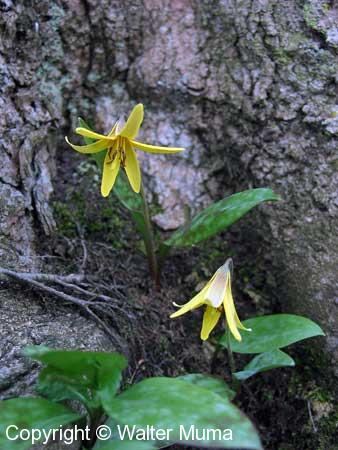
|
 |
The flowers.
Leaves are also visible here. |
|
 |
|
|
 |
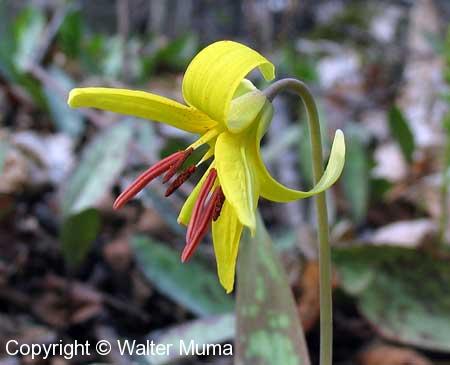
|
 |
It is easy to see why I call this a highly photogenic flower!
I go kinda nuts taking photos of this plant every spring, even though I already have plenty of photos of it! |
|
 |
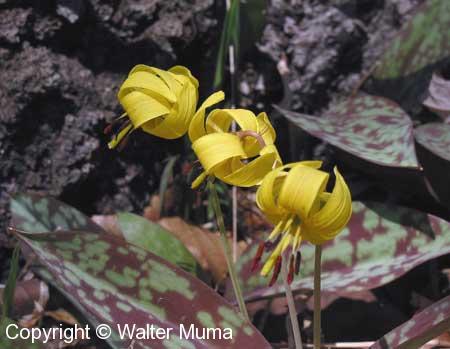
|
 |
Three flowers that are slightly different - note how the petals are curled right back. This photo certainly shows why this plant is a member of the Lily Family! |
|
 |
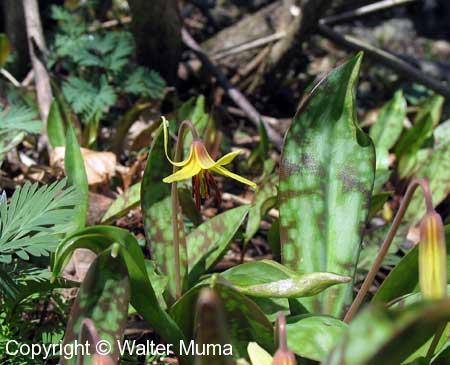
|
 |
Flower and leaves. |
|
 |
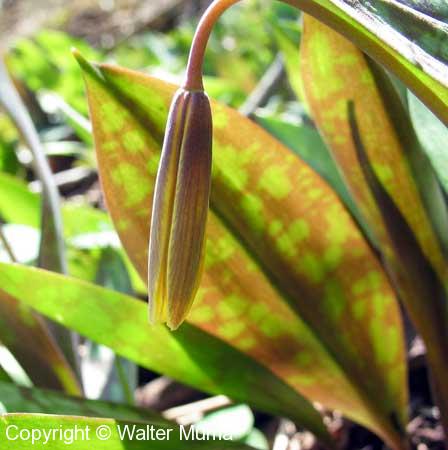
|
 |
Unopened flower. |
|
 |
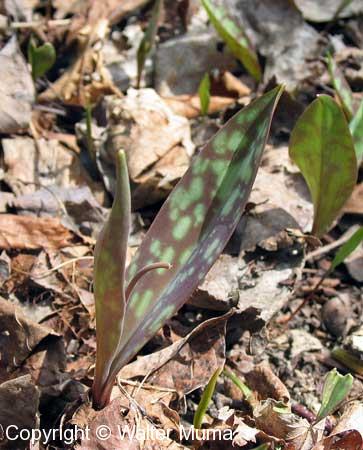
|
 |
Leaves. Someone ate the flower.
Note how mottled they are. |
|
 |
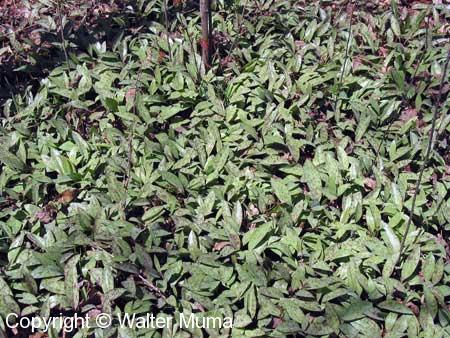
|
 |
In some places Trout Lilies grow very dense, just like a ground cover. They are all individual plants, however. |
|
 |
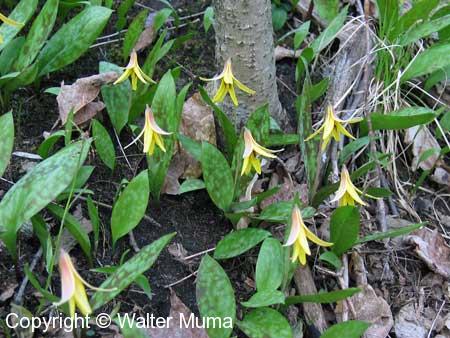
|
 |
A small grouping of them. |
|
 |
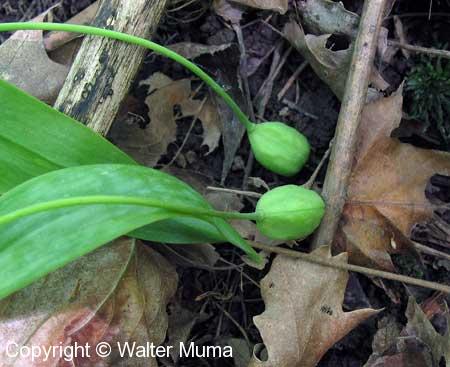
|
 |
Maturing seed pods. By this time, the leaves have already started to die off. |
|
 |
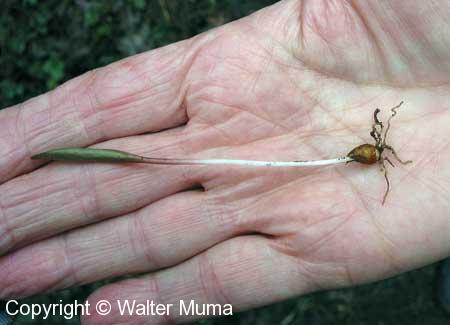
|
 |
The small bulb (corm) at the bottom of the plant is edible raw. It has a very fresh taste, sort of like cucumber. |
|
 |
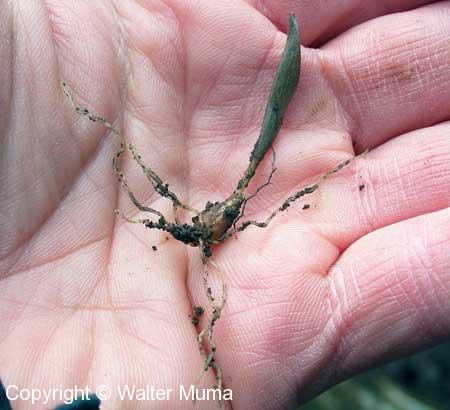
|
 |
Another one. Peel away the sheath, roots, and dirt, and pop it in your mouth.
There's not a lot there, but they are nice and fresh tasting.
As usual, please exercise careful judgment when collecting wild plants for food. Wild plants everywhere are under a lot of stress due to habitat loss. Best to leave them for others (birds, animals, insects, etc, as well as humans) to enjoy! |
|
 |
|
|  |
 |
|
|
Range map for Trout Lily (Erythronium americanum)
PLEASE NOTE: A coloured Province or State means this species occurs somewhere in that Province/State.
The entire Province/State is coloured, regardless of where in that Province/State it occurs.

(Range map provided courtesy of the USDA website
and is displayed here in accordance with their
Policies)
|
|